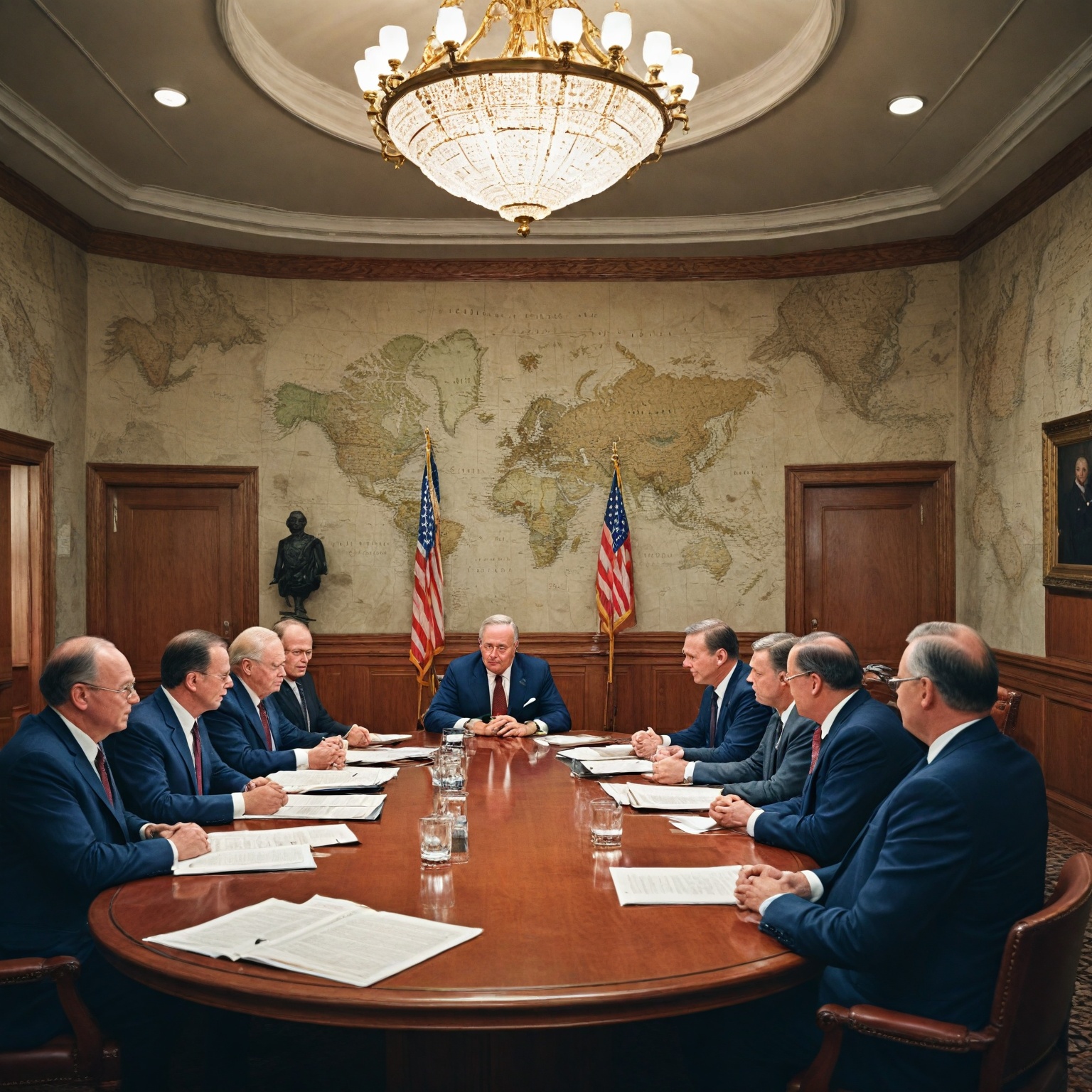Summary
The European Union is set to unveil a package of retaliatory tariffs against the United States in response to U.S. tariffs imposed on steel, aluminium, and related products imported from the EU. These U.S. tariffs, initially introduced in 2018 and expanded in 2025 to rates of up to 25%, have been a focal point of escalating trade tensions between the two economic powers, prompting the EU to prepare countermeasures aimed at protecting its industries and restoring trade balance. The forthcoming announcement, expected on or after 6 August 2025, marks a critical moment in ongoing transatlantic trade disputes that involve complex legal, economic, and diplomatic considerations.
The U.S. tariffs were justified under national security grounds and broader concerns over unfair trade practices, including alleged subsidies and trade deficits affecting American industries. However, these measures have sparked controversy both for their unilateral application and the use of emergency powers under the International Emergency Economic Powers Act, raising questions about their conformity with World Trade Organization (WTO) rules and international trade law. The EU’s planned countermeasures, which include suspending tariff concessions and imposing customs duties on a broad array of U.S. goods—such as agricultural products, manufactured goods, and steel-related items—seek to rebalance concessions within the WTO framework while signaling resistance to what the EU views as coercive trade practices.
The legal basis for the EU’s response involves multiple instruments, notably the WTO Agreement on Safeguards, the EU Enforcement Regulation, and the newly established Anti-Coercion Instrument designed to counteract economic coercion beyond trade disputes. These mechanisms reflect the EU’s strategic approach to balancing compliance with international law while protecting its economic interests and maintaining pressure for negotiations. Politically, the countermeasures emerge amid intensified diplomatic engagement and efforts to negotiate a Framework Agreement for fair and reciprocal trade, though uncertainties remain regarding the scope and escalation of tariffs on both sides.
Economically, the tariff conflict has had mixed impacts: while U.S. steel producers have benefited from protection, downstream industries in both the U.S. and EU face higher costs and supply chain disruptions. The EU’s retaliatory tariffs, covering approximately €18 billion worth of U.S. goods, could increase costs for American exporters and affect consumer prices in Europe, contributing to volatility in trade and economic growth forecasts. The upcoming EU announcement thus encapsulates broader debates on the future of transatlantic trade relations, highlighting the challenges of reconciling national interests within a rules-based international trading system.
Background
The imposition of tariffs by the United States on imports of steel, aluminium, and certain related products from the European Union and other trading partners has been a significant source of tension in transatlantic trade relations. On March 12, 2025, the US government introduced tariffs of up to 25% on these imports, escalating ongoing trade disputes and prompting a strong response from the EU. These tariffs followed earlier US measures dating back to 2018, when President Donald Trump initially imposed tariffs on €6.4 billion worth of European steel and aluminium exports, later expanding the scope to include additional products in 2020.
The US tariffs are part of a broader strategy aimed at addressing what the US administration describes as unfair trade practices, including large and persistent trade deficits and alleged subsidies that disadvantage American industries. The Trump administration notably utilized the International Emergency Economic Powers Act (IEEPA) to justify some of its tariff actions, marking a novel use of emergency powers for trade tariffs. This move sparked criticism from economists and trade experts who questioned its legality and adherence to international trade rules.
In response, the European Union has been preparing countermeasures to protect its economic interests and businesses. The European Commission announced it is finalizing an initial package of retaliatory tariffs against US goods, with further countermeasures under consideration should negotiations fail. The EU’s potential measures include suspending tariff concessions under the WTO Agreement on Safeguards and imposing increased customs duties on selected US products. In 2018, the EU had already implemented counter-tariffs on €2.8 billion worth of US exports, including steel and aluminium products, reflecting the ongoing tit-for-tat trade measures between the two economies.
The impact of these tariffs has been multifaceted. While US steel producers have benefited from protective tariffs, downstream industries such as construction, automotive, and manufacturing have faced higher input costs, complicating supply chains and increasing consumer prices. Similarly, the EU anticipates that sectors including steel, aluminium, textiles, leather goods, and agricultural products will be significantly affected by the countermeasures. The broader economic repercussions of tariff escalations have contributed to volatility in trade activity, with some analysts noting a slowdown in euro area economic growth amid the uncertainty.
Trade tensions between the US and EU are not isolated incidents but part of a longer history of disputes involving subsidy allegations, such as the nearly 15-year WTO case concerning large civil aircraft subsidies. These longstanding conflicts have shaped the complex commercial and legal backdrop against which current tariff measures and countermeasures are being negotiated.
The European Union’s preparation to reveal its countermeasures this Thursday marks a critical juncture in the ongoing trade conflict, highlighting the persistent challenges in reconciling the trade policies of two of the world’s largest economies.
Legal and Procedural Framework
The European Union’s approach to imposing countermeasures in response to US tariffs is grounded in a combination of WTO rules, EU regulations, and newly established legislative instruments aimed at addressing economic coercion. Central to this framework is the Enforcement Regulation (Regulation (EU) No 654/2014), which provides the legal basis for rebalancing concessions when safeguard measures by a third country affect EU trade interests. According to Article 3(c) of this Regulation, the EU may suspend or withdraw concessions or other obligations in response to safeguard measures under the WTO Agreement on Safeguards or equivalent provisions in other international trade agreements. The process requires a comitology procedure whereby EU Member States are consulted and invited to endorse proposed countermeasures before adoption. The European Commission drafts the implementing act detailing the contemplated countermeasures and their scope, which currently includes suspending tariff concessions or imposing increased customs duties on certain US products.
Complementing this is the recently enacted Anti-Coercion Instrument (ACI), Regulation 2023/2675, which equips the EU with tools to respond to economic coercion by non-EU countries, including the United States. Unlike the Enforcement Regulation, the ACI addresses coercive economic behaviours not explicitly covered by WTO rules, focusing on breaches of international law beyond trade agreements. The instrument emphasizes dialogue and de-escalation but allows for countermeasures such as trade restrictions, import or export licenses, and restrictions on services or investment access as a last resort. Implementation involves a two-stage process: the Council determines the presence of coercion via an implementing act based on the Commission’s proposal, followed by the Commission’s adoption of appropriate response measures. This instrument ensures compliance with both EU legal order and international law and facilitates coordination with international partners in bilateral, plurilateral, or multilateral forums, as reflected in the 2023 Hiroshima Summit outcomes.
In parallel, the WTO dispute settlement system continues to influence the EU’s countermeasure strategy. The longstanding EU-US disputes over large civil aircraft subsidies have resulted in WTO authorizations permitting both parties to impose retaliatory tariffs within defined limits. For example, the EU was authorized to impose countermeasures up to approximately US$4 billion annually following a WTO arbitrator’s decision linked to Boeing subsidies, while the US secured authorization to impose tariffs on €7.5 billion worth of EU goods per year. These authorizations reflect the WTO’s role in regulating permissible countermeasures in cases of breaches under the Agreement on Subsidies and Countervailing Measures (SCM Agreement). However, the WTO has rejected certain EU attempts to impose tariffs related to NASA and Department of Defense R&D subsidies, clarifying the limits of lawful countermeasures under WTO law.
Taken together, these instruments and procedures establish a multifaceted legal and procedural framework that the EU employs to respond effectively and lawfully to US tariffs and broader economic coercion, balancing compliance with international obligations and safeguarding EU trade and economic interests.
Details of the Upcoming Announcement
The European Union is poised to announce a package of retaliatory tariffs against the United States in response to the resumption and expansion of U.S. tariffs on steel and aluminium imports. This announcement, expected on or after 6 August following a delay from the originally planned mid-April imposition, reflects ongoing trade tensions and negotiations between the two economic powers.
The EU’s countermeasures will target a broad range of U.S. products, including agricultural goods such as soybeans, meats, bourbon, and processed foods, as well as manufactured items like sewing machines, airplane parts, and car components. These tariffs could significantly impact major American companies, including Boeing, due to the heavy reliance on exports to the EU market. The proposed tariff rates are anticipated to vary between 10 and 25 percent, affecting diverse sectors from steel and clothing to motor-powered boats and kitchenware.
The retaliatory tariffs stem from the EU’s position that the U.S. tariffs on steel and aluminium constitute safeguard measures under WTO rules—a stance that has been disputed by WTO panels but remains the basis for the EU’s planned response. To ensure legitimacy, the EU has initiated a stakeholder consultation period to discuss the targeted products, with the process involving endorsement by EU Member States through a comitology procedure prior to final adoption.
Regulatory groundwork for these measures was laid by an interinstitutional political agreement reached in March 2023, followed by European Parliament approval in October 2023. The Council of Agriculture and Fisheries Ministers has also adopted the regulation without discussion, underscoring the political consensus to proceed. Additionally, the EU’s Anti-Coercion Instrument, established to protect the Union from economic coercion, provides a legal framework empowering these countermeasures.
Economic data highlight the stakes involved: the EU enjoys a substantial trade surplus of approximately €157 billion in goods with the U.S., alongside significant trade in services. The introduction of tariffs threatens to disrupt this balance, increasing costs for American exporters and potentially affecting prices and availability within the EU market. The average tariff increase could amount to a nearly $1,300 additional cost per U.S. household in 2025, reflecting broader implications for both economies.
In sum, the forthcoming EU announcement will outline a comprehensive list of retaliatory tariffs designed to counteract the economic harm caused by U.S. steel and aluminium tariffs and subsequent measures. Companies involved in transatlantic trade are advised to monitor developments closely and prepare for adjustments in supply chains and market access conditions.
Political and Diplomatic Context
The European Union’s move to unveil countermeasures against U.S. tariffs emerges against a backdrop of escalating trade tensions and strategic economic coercion. The EU’s regulatory framework, particularly Regulation 2023/2675—also known as the Anti-Coercion Instrument—provides the legal basis for responding to economic coercion from any non-EU country, including the United States. This regulation allows the EU to deploy countermeasures that may include the non-performance of international obligations in a manner compliant with both EU law and international law, thereby enabling a calibrated response to breaches of international trade rules.
The political impetus for these measures intensified following the imposition of U.S. tariffs on European steel, aluminum, automobiles, and other goods, which were met with firm declarations from EU leadership. Commission President Ursula von der Leyen emphasized the EU’s readiness to implement and escalate countermeasures if negotiations failed, signaling a clear willingness to shift from confrontation to negotiation while preparing a package of retaliatory actions to protect EU interests and businesses. The countermeasures are designed not only to address the immediate tariffs but also to reinforce the EU’s broader stance against unilateral trade actions and coercion.
Diplomatic efforts have simultaneously progressed to mitigate these tensions through dialogue and coordination. An interinstitutional political agreement on the EU’s regulation was reached in March 2023, followed by approval from the European Parliament and formal adoption by the Council, underscoring the EU’s collective political resolve to confront economic coercion. Furthermore, the EU has engaged in international fora such as the G7 Hiroshima Summit, where economic resilience and security were key agenda items, illustrating the bloc’s commitment to multilateral coordination against coercive trade practices.
Expert analyses have highlighted the complexity of the EU’s response strategy. Ignacio Garcia Bercero, former chief EU negotiator, suggested that the EU’s retaliation would be smarter and more targeted, focusing on maximizing political impact within the United States by potentially restricting access to EU public procurement and service markets, including sectors like finance and technology. This strategic approach reflects the EU’s recognition of the asymmetric nature of the tariff war, given that the U.S. economy holds a larger share of leverage in certain sectors.
The ongoing dialogue between the EU and the U.S. also includes negotiations on a Framework Agreement aimed at establishing reciprocal, fair, and balanced trade. However, uncertainties remain regarding specific tariff levels and carve-outs, such as those on spirits and automobiles, with the EU suspending some countermeasures temporarily in hopes of a negotiated resolution. The situation remains fluid, with both sides preparing for possible further escalation or compromise.
In sum, the political and diplomatic context surrounding the EU’s upcoming countermeasures is characterized by a mix of assertive legal preparedness, strategic economic retaliation, and active engagement in multilateral and bilateral negotiations. This multifaceted approach aims to protect EU economic interests while striving to restore a more balanced and rules-based trade relationship with the United States.
Economic and Trade Impact Analysis
The imposition of US tariffs on steel, aluminum, and various other goods has generated significant economic and trade repercussions both within the United States and across the European Union. These tariffs, ranging from 10 to 25 percent and sometimes excluding Mexico and Canada, were primarily designed to protect domestic industries, particularly steel and aluminum producers, under Section 232 of the Trade Expansion Act of 1962. While benefiting US producers in these sectors, the tariffs have simultaneously increased input costs for downstream industries such as automotive, construction, and manufacturing, which rely heavily on imported raw materials and intermediate goods.
The transportation equipment sector, notably reliant on imports from Canada, Mexico, and the EU, has experienced tariff rates exceeding 25 percent, marking it as one of the most heavily impacted industries. Fabricated metals and leather products also continue to feel the strain of tariffs, especially due to their exposure to non-USMCA trade and the persistent steel and aluminum duties. This has disrupted global supply chains, leading to a complex realignment in trade flows and production patterns, commonly referred to as the “great reallocation”.
On the EU side, countermeasures have targeted a broad array of US exports, including steel and aluminum, textiles, leather goods, plastics, wood products, and several agricultural items. The European Commission’s response includes tariffs on approximately €18 billion worth of US goods, reinstating measures from 2018 and 2020 while considering new packages aimed at mitigating the impact of the US tariffs. These retaliatory tariffs are viewed as rebalancing concessions within the framework of WTO rules, aimed at restoring trade equilibrium and safeguarding EU industries affected by the US policies.
The EU has, however, exhibited caution in certain sectors, notably refraining from targeting US oil and gas exports, which constitute nearly a quarter of US exports to Europe. Moreover, the adoption of the EU’s Anti-Coercion Instrument (ACI) in late 2023 provides a new legal framework to deter economic coercion by third countries. While not yet deployed, the ACI could be used in future trade disputes, including those involving tariff countermeasures and intellectual property rights.
Trade diversion effects have been observed as American consumers shift demand towards imports from countries facing lower tariffs, such as Japan, South Korea, and the EU, thereby improving the competitive position of European producers in the US market relative to countries like China, South Africa, Brazil, and Vietnam, which face higher US tariffs. However, these shifts also introduce complexities for EU importers, especially when US-based producers relocate production to third countries to circumvent tariffs, raising concerns about circumvention and enforcement under EU law.
Historical Context
The imposition and contestation of tariffs between the United States and Europe have deep historical roots, reflecting broader economic and political dynamics. In the late 1950s, the Beale–Beard thesis, which suggested
Analysis and Opinions
The proposed EU countermeasures in response to U.S. tariffs have sparked significant debate among trade experts and policymakers, reflecting broader concerns about the evolving dynamics of transatlantic trade relations. Ignacio Garcia Bercero, a former EU chief negotiator, emphasized the need for the EU to adopt smarter and more targeted retaliatory actions that maximize political impact within the United States. He suggested that the EU might pursue broader countermeasures that could restrict U.S. companies’ access to EU public procurement tenders and services markets, spanning sectors such as finance and technology.
The European Commission, as the executive body responsible for formulating the bloc’s trade policy, faces intense lobbying from member states over the scope of U.S. products targeted by these tariffs. Although the Commission proposes specific levies, it would require a qualified majority of EU leaders voting against them to rescind the measures, highlighting the political complexity involved in finalizing the retaliation list. Discussions are already underway to implement two lists of U.S. products by mid-April, with additional countermeasures potentially coming into force later as a second wave of retaliation. This could include targeting the U.S. trade surplus in services with the EU and the deployment of the EU’s 2023 anti-coercion instrument, which may affect business licenses and intellectual property rights.
From an economic perspective, the impact of tariffs on industries remains contested. Studies have shown mixed effects of U.S. tariffs introduced in 2018-2019, with some manufacturing sectors experiencing disruption due to the global interconnectedness of supply chains. While U.S. steel producers benefited from protective tariffs, downstream industries faced higher input costs, demonstrating the complex trade-offs involved in such policies. The EU’s retaliatory approach thus reflects an effort to balance political signaling with minimizing harm to its own industries, within the constraints of World Trade Organization rules that permit safeguard measures to protect at-risk sectors.
Additionally, the broader context of economic coercion and trade resilience shapes the EU’s stance. The EU continues to engage multilaterally, including at the G7 and bilaterally with partners like the U.S. and Japan, to address economic coercion issues comprehensively. This suggests that the EU’s tariff countermeasures are part of a larger strategy to promote fair and reciprocal trade practices while safeguarding economic security and resilience on both sides of the Atlantic.
The content is provided by Jordan Fields, Front Signals


















